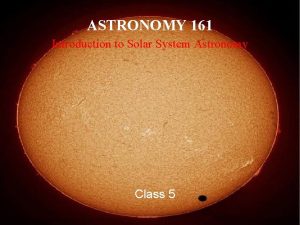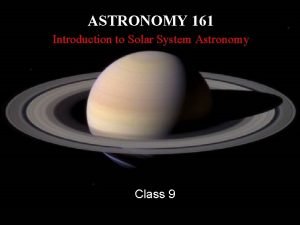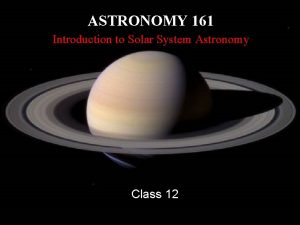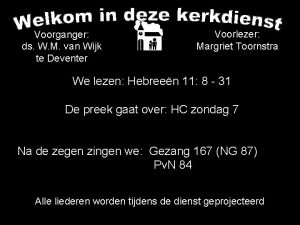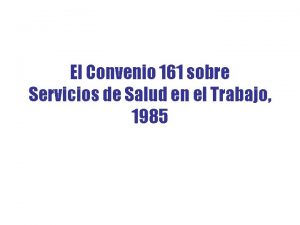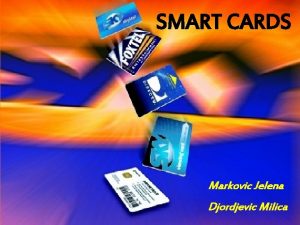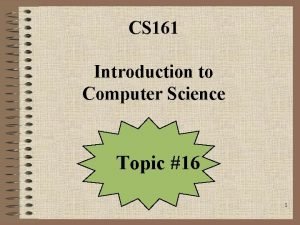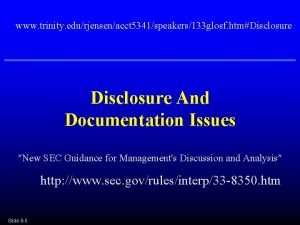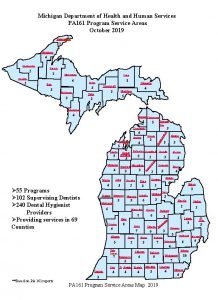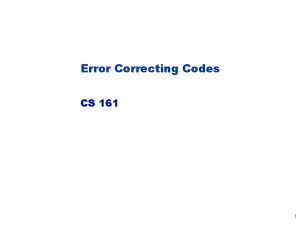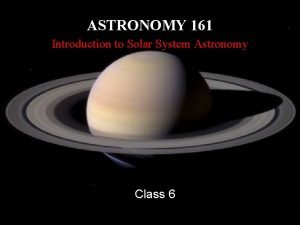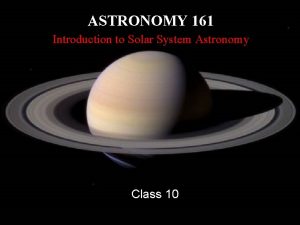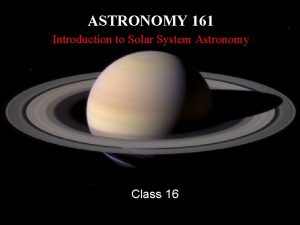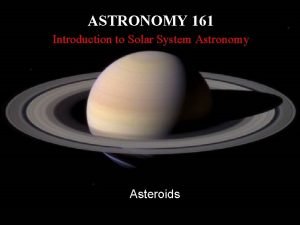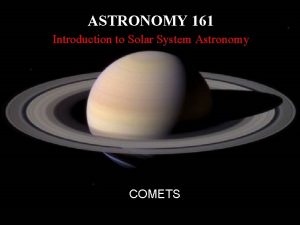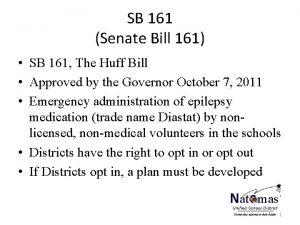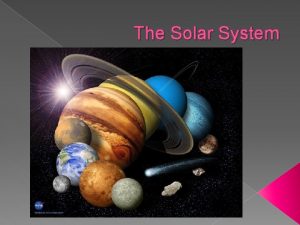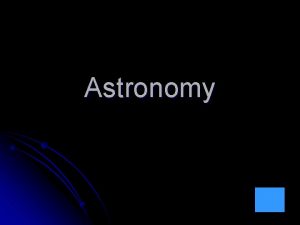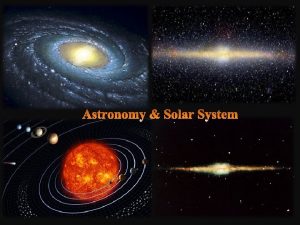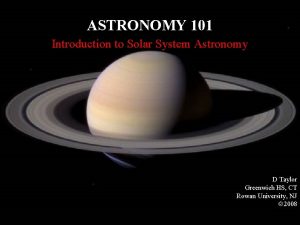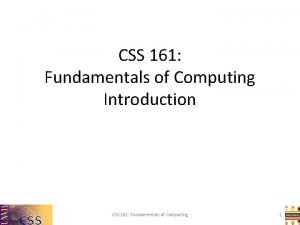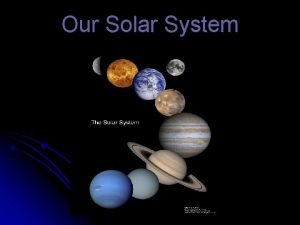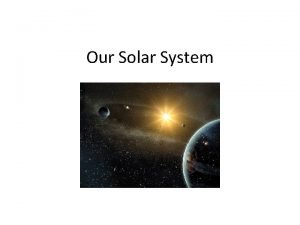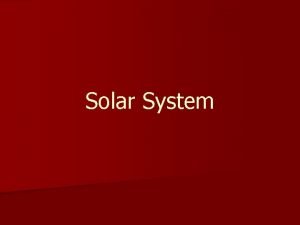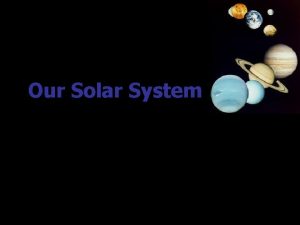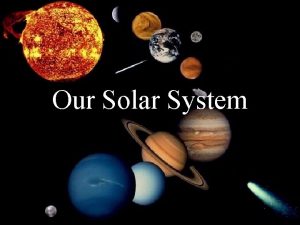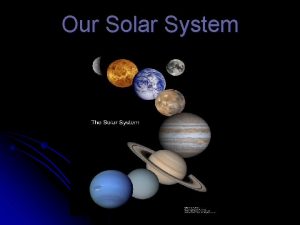ASTRONOMY 161 Introduction to Solar System Astronomy Class
























- Slides: 24

ASTRONOMY 161 Introduction to Solar System Astronomy Class 7

Newton’s Laws Monday, January 22

Newton’s Laws: Key Concepts Three Laws of Motion: (1) An object remains at rest, or moves in a straight line at constant speed, unless acted on by an outside force. (2) The acceleration of an object is directly proportional to force, and inversely proportional to mass. (3) For every action, there is an equal and opposite reaction. Law of Gravity: (4) The gravitational force between masses M and m, separated by distance r, is

Isaac Newton (1643 -1727): English Discovered: three laws of motion, one law of universal gravitation.


Newton’s great book: Newton’s laws are universal in scope, and mathematical in form.

(1) Newton’s First Law of Motion: An object remains at rest, or moves in a straight line at constant speed, unless acted on by an outside force. Precise mathematical laws require precise definitions of terms: SPEED = rate at which an object changes its position. Example: 65 miles/hour. VELOCITY = speed plus direction of travel. Example: 65 miles/hour to the north.

Acceleration = rate at which an object changes its velocity. Acceleration can involve: (1) increase in speed (2) decrease in speed OR (3) change in direction.

Force = a push or pull acting on an object. Examples: gravity = pull electrostatic attraction = pull electrostatic repulsion = push

(2) Newton’s Second Law of Motion: The acceleration of an object is directly proportional to the force acting on it, and inversely proportional to its mass. In mathematical form: Or alternatively:

Example of Newton’s Second Law: A package of cookies has mass m = 0. 454 kilograms, And experiences gravitational acceleration g = 9. 8 meters/second 2 How large is the force acting on the cookies?

(3) Newton’s Third Law of Motion: For every action, there is an equal and opposite reaction. Whenever A exerts a force on B, B exerts a force on A that’s equal in size and opposite in direction. All forces come in pairs.

Example of Newton’s Third Law: Cookies push on hand: F = 1 pound, downward. Hand pushes on cookies: F = 1 pound, upward. Remove hand! Earth pulls on cookies: F = 1 pound, downward. Cookies pull on earth: F = 1 pound, upward.

THIRD Law states: force on Earth = force on cookies SECOND Law states: acceleration = force divided by mass Mass of Earth = 1025 x mass of cookies Therefore, acceleration of cookies = 1025 x acceleration of Earth. (Cookies reach a high speed while the Earth hardly budges. )

But…why do the cookies and the Earth exert a force on each other? Newton’s Law of Gravity states that gravity is an attractive force acting between ALL pairs of massive objects. Gravity depends on: (1) MASSES of the two objects, (2) DISTANCES between the objects.

(4) Newton’s Law of Gravity: The gravitational force between two objects F = gravitational force M = mass of one object m = mass of the second object r = distance between centers of objects G = “universal constant of gravitation”

Gravitational force varies directly with mass and inversely with square of distance. Double the distance between objects: Force 1/4 as large. Triple the distance between objects: Force 1/9 as large.

Example: What is gravitational force between Earth and cookies?

Example Encore: What is acceleration of cookies?

Newton’s question: can GRAVITY be the force keeping the Moon in its orbit? Newton’s approximation: Moon is on a circular orbit. Even if its orbit were perfectly circular, the Moon would still be accelerated.

The Moon’s orbital speed: radius of orbit: r = 3. 8 x 108 m circumference of orbit: 2 pr = 2. 4 x 109 m orbital period: P = 27. 3 days = 2. 4 x 106 sec orbital speed: v = (2 pr)/P = 103 m/sec = 1 km/sec!

Acceleration required to keep Moon on a circular orbit

Acceleration provided by gravity

Bottom Line If gravity goes as one over the square of the distance, Then it provides the right acceleration to keep the Moon on its orbit (“to keep it falling”). Triumph for Newton!!
 Astronomy 161
Astronomy 161 Solar system astronomy class
Solar system astronomy class Solar system astronomy class
Solar system astronomy class Astronomy 161
Astronomy 161 Learning astronomy by doing astronomy activity 1 answers
Learning astronomy by doing astronomy activity 1 answers Learning astronomy by doing astronomy activity 7 answers
Learning astronomy by doing astronomy activity 7 answers Learning astronomy by doing astronomy
Learning astronomy by doing astronomy Solar panel cells wholesale
Solar panel cells wholesale Inexhaustible source of energy
Inexhaustible source of energy Psalm 96 2-3
Psalm 96 2-3 Gezang 161
Gezang 161 Vidas blue
Vidas blue 161 port snmp
161 port snmp Opwekking 585
Opwekking 585 Convenio 161 oit resumen
Convenio 161 oit resumen Ucr cs 161
Ucr cs 161 Computer security 161 cryptocurrency lecture
Computer security 161 cryptocurrency lecture Jelena đorđevic 161
Jelena đorđevic 161 Inls 161
Inls 161 Computer science 161
Computer science 161 Mcp-161
Mcp-161 Fas 161 disclosure
Fas 161 disclosure Pa 161 program
Pa 161 program Ac 161
Ac 161 Error 161
Error 161
